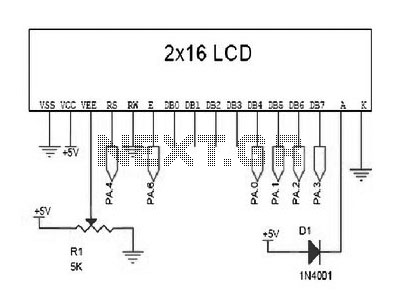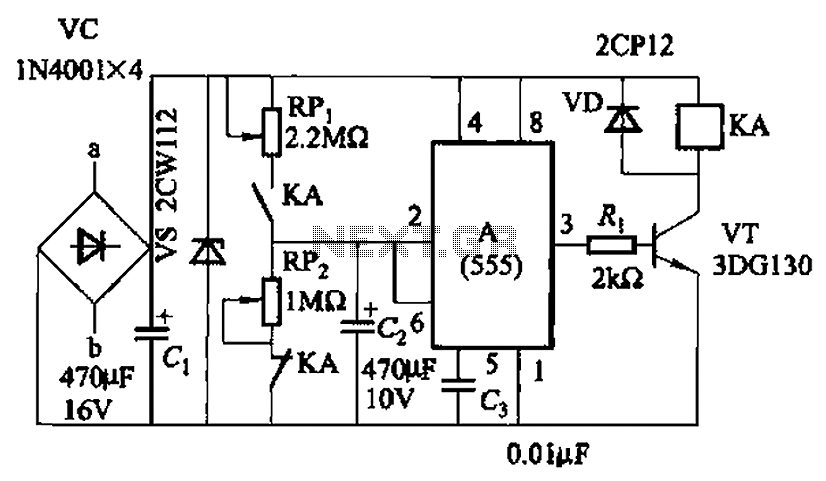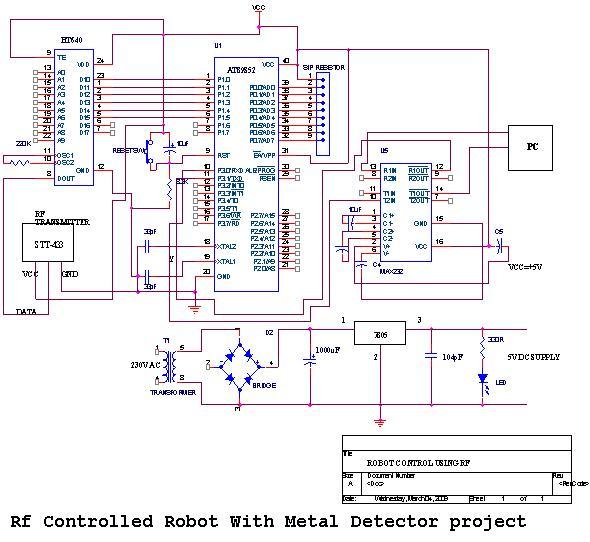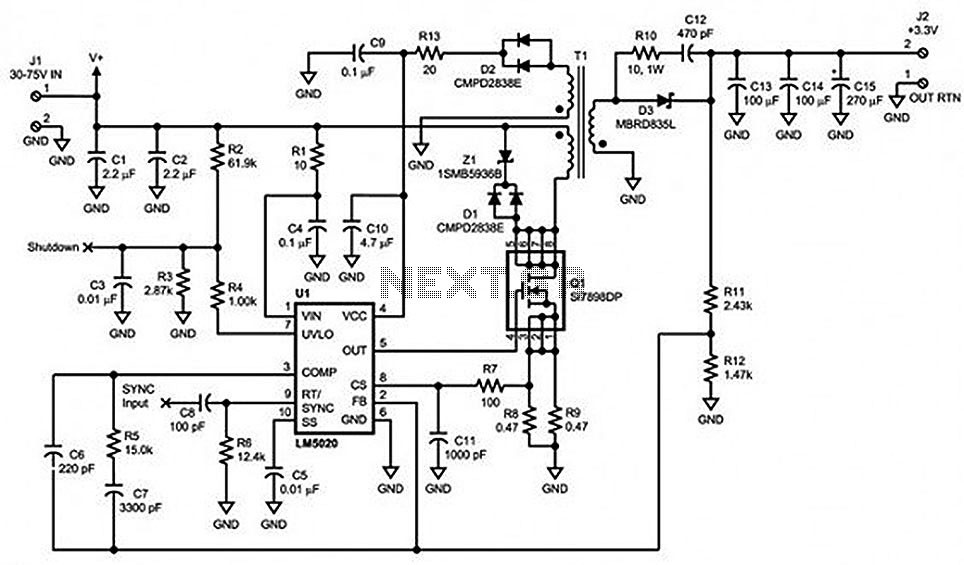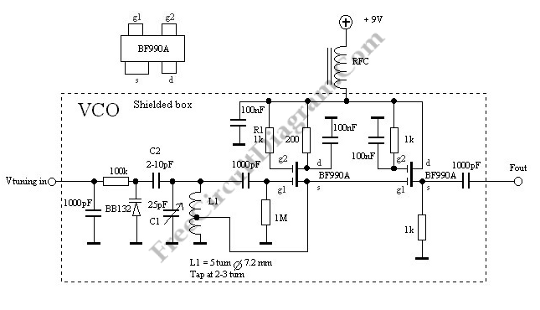
Thermocouple Temperature Control
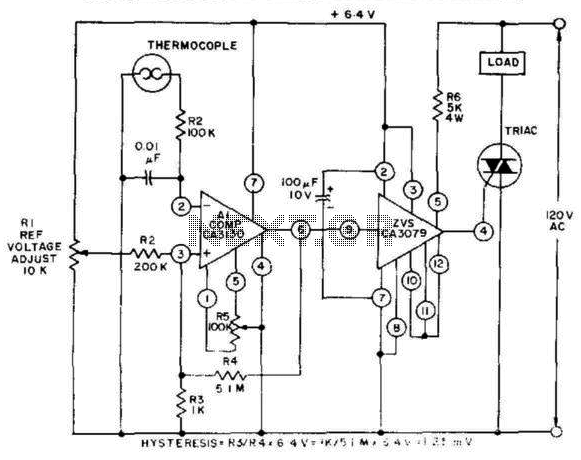
This control, featuring zero-voltage load switching, utilizes a CA3130 BiMOS operational amplifier and a CA3079 zero-voltage switch. The CA3130, functioning as a comparator, is particularly suited for comparing the low voltages produced by a thermocouple against an adjustable reference voltage ranging from 0 to 20 mV.
The circuit employs a CA3130 BiMOS operational amplifier, which is characterized by its high input impedance and low offset voltage, making it well-suited for applications involving low-level signals like those from a thermocouple. The operational amplifier is configured as a comparator, allowing it to efficiently compare the voltage output from the thermocouple with a user-defined reference voltage.
The adjustable reference voltage is set within the range of 0 to 20 mV, enabling the circuit to accommodate various thermocouple outputs, which are typically low. This flexibility is essential in applications where precision temperature measurement is critical. The output of the CA3130 indicates whether the thermocouple voltage exceeds the reference voltage, thus triggering the CA3079 zero-voltage switch.
The CA3079 is designed for zero-voltage switching, which minimizes switching transients and electromagnetic interference, enhancing the reliability of the control circuit. This switch allows for the load to be turned on or off without generating significant voltage spikes or noise, which is particularly beneficial in sensitive electronic systems.
Overall, this control circuit provides an effective solution for temperature monitoring and control applications, ensuring accurate voltage comparison and reliable load switching while maintaining signal integrity and minimizing disturbances. This control, with zero-voltage load switching, uses a CA3130 BiMOS op amp and a CA3079 zero-voltage switc h. The CA3130, used as a comparator, is ideal because it can "compare" the low voltages generated by the thermocouple to the adjustable reference voltage over the range of 0 to 20 mV.
The circuit employs a CA3130 BiMOS operational amplifier, which is characterized by its high input impedance and low offset voltage, making it well-suited for applications involving low-level signals like those from a thermocouple. The operational amplifier is configured as a comparator, allowing it to efficiently compare the voltage output from the thermocouple with a user-defined reference voltage.
The adjustable reference voltage is set within the range of 0 to 20 mV, enabling the circuit to accommodate various thermocouple outputs, which are typically low. This flexibility is essential in applications where precision temperature measurement is critical. The output of the CA3130 indicates whether the thermocouple voltage exceeds the reference voltage, thus triggering the CA3079 zero-voltage switch.
The CA3079 is designed for zero-voltage switching, which minimizes switching transients and electromagnetic interference, enhancing the reliability of the control circuit. This switch allows for the load to be turned on or off without generating significant voltage spikes or noise, which is particularly beneficial in sensitive electronic systems.
Overall, this control circuit provides an effective solution for temperature monitoring and control applications, ensuring accurate voltage comparison and reliable load switching while maintaining signal integrity and minimizing disturbances. This control, with zero-voltage load switching, uses a CA3130 BiMOS op amp and a CA3079 zero-voltage switc h. The CA3130, used as a comparator, is ideal because it can "compare" the low voltages generated by the thermocouple to the adjustable reference voltage over the range of 0 to 20 mV.
